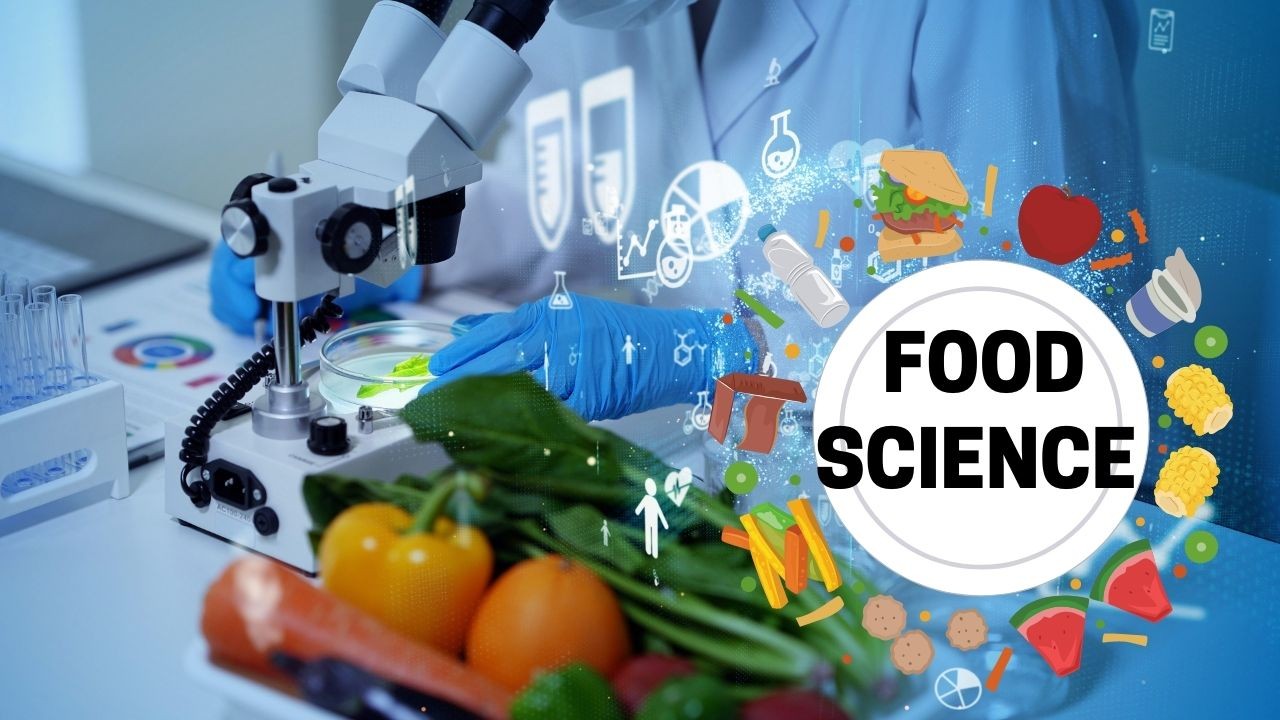In the symphony of our daily lives, the subtle and profound science that shapes our meals often goes unnoticed. Food Science, a captivating discipline, unveils the mysteries behind what we eat, transforming the act of nourishment into an art and a science. This article embarks on a journey through the realm of Food Science, delving into the alchemy of flavors and the cutting-edge innovations that redefine our culinary experiences.
I. The Art and Science of Flavor: Unveiling the Chemistry of Taste
In the enchanting realm of Food Science, one of its most mesmerizing facets lies in the intricate chemistry that underpins the flavors we savor daily. Taste, as a sensory perception, is a harmonious blend of art and science, where compounds and reactions orchestrate a symphony on our taste buds.
Exploration of the Chemistry Behind Taste
At its core, taste is a sensory perception shaped by the interaction of various chemical compounds with our taste receptors. These compounds, present in the food we consume, stimulate our taste buds and send signals to the brain, creating the rich tapestry of flavors we perceive.
The Role of Compounds and Reactions in Creating Flavors
Flavors are not mere happenstance; they are the result of a myriad of compounds and chemical reactions working in tandem. The Maillard reaction, a cornerstone of flavor development, occurs when amino acids and reducing sugars react under heat, imparting enticing aromas and complex flavors.
Examples of Flavor-Enhancing Processes (e.g., Maillard Reaction)
The irresistible aroma of freshly baked bread or the golden crust on a perfectly seared steak—these are the tangible outcomes of flavor-enhancing processes. The Maillard reaction, named after the French chemist Louis-Camille Maillard, is a prime example, creating a spectrum of compounds contributing to the complexity of flavors.
II. Nutritional Alchemy: Unlocking the Secrets of a Healthy Plate
In the enchanting realm of Food Science, Nutritional Alchemy serves as a key to unlocking the secrets of what truly nourishes our bodies. This facet of the discipline goes beyond the mere act of consuming food; it is a meticulous exploration of the nutritional components that make every bite a source of vitality.
Understanding the Nutritional Components of Food
At the heart of Nutritional Alchemy lies a profound understanding of the building blocks within our meals. Food is not just a source of flavor; it is a complex composition of macronutrients and micronutrients, each playing a unique role in supporting our overall well-being.
Balancing Macronutrients and Micronutrients
Achieving a balanced diet involves harmonizing the intake of macronutrients and micronutrients. Just as a symphony requires a delicate blend of instruments, our bodies thrive on the harmonious interplay of these essential nutritional components.
The Science of Digestion and Nutrient Absorption
Nutritional Alchemy extends its reach into the intricate processes of digestion and nutrient absorption, unveiling the journey of food from plate to cell. Understanding this science sheds light on nutrient utilization efficiency and empowers individuals to make informed choices about food combinations and preparation methods.
The Impact of Food Choices on Overall Health and Well-being
Every food choice we make contributes to the grand narrative of our health and well-being. Nutritional Alchemy emphasizes the profound impact of these choices, recognizing that food is not merely fuel but a powerful determinant of our physical and mental vitality.
III. Innovation in Food Science: Pioneering the Future of Sustenance
In the ever-evolving realm of Food Science, innovation stands as the driving force behind the transformation of our global food systems. This section delves into the dynamic landscape of food processing, sustainable practices combating food waste, cutting-edge technologies in preservation and packaging, and the development of novel functional foods.
The Dynamic Landscape of Food Processing
Food processing is undergoing a revolutionary shift, marked by innovative techniques that enhance the shelf life of products and preserve their nutritional integrity. Advanced cooking methods and novel extraction processes are examples of enhancing quality and efficiency.
Sustainable Practices and Combatting Food Waste
As we grapple with the challenges of a growing population and environmental concerns, sustainable practices in Food Science have emerged. Initiatives minimizing food waste, such as precision agriculture and circular economy models, are gaining momentum, contributing to a sustainable future.
Cutting-Edge Technologies in Preservation and Packaging
Advancements in preservation and packaging technologies redefine how we store and transport food. Modified atmosphere packaging and high-pressure processing are examples, enhancing both safety and convenience in the food supply chain.
Development of Novel Functional Foods and Their Health Benefits
Food scientists are at the forefront of developing novel functional foods designed to provide specific health benefits. Fortification, enrichment, and personalized nutrition are shaping a new era where food is not just sustenance but also medicine.
IV. Bridging Tradition and Progress: The Harmonious Interplay in Food Science
In the intricate world of Food Science, a fascinating interplay unfolds as traditional culinary wisdom dances with the rhythms of modern innovation. This delicate balance not only preserves the heritage of culinary arts but also propels the field into new frontiers, addressing global challenges with ingenuity and foresight.
Preserving Culinary Heritage
Traditional culinary practices, handed down through generations, are a testament to the cultural richness ingrained in our food. Food Science acts as a guardian of these time-honored techniques, merging them with modern technology to breathe new life into ancestral recipes.
Addressing Global Challenges
As our world faces complex challenges such as population growth and climate change, Food Science emerges as a key player in crafting sustainable solutions. The field’s innovative prowess develops practices that minimize environmental impact, reduce food waste, and ensure the availability of nourishing sustenance.
Collaborative Endeavors: Academia and Private Sector Unite
In the pursuit of advancing Food Science, successful collaborations between academia and the private sector stand as shining examples of fruitful outcomes born from the synergy of knowledge and practical application.
Conclusion:
Navigating the Culinary Cosmos
In this journey through the expansive realms of Food Science, we’ve unveiled the intricate tapestry that weaves together flavor, nutrition, and innovation. From deciphering the chemistry behind taste to understanding the nutritional alchemy that sustains our bodies, and from embracing time-honored culinary traditions to embracing cutting-edge technologies, Food Science stands as an indispensable force in our daily lives.
Recap of the Multifaceted Aspects of Food Science:
At its core, Food Science is the art and science of what we eat—an exploration transcending the mere act of consuming food. It’s about savoring the symphony of flavors orchestrated by chemical reactions, understanding the nutritional alchemy that nourishes us, and witnessing the dynamic interplay between tradition and progress.
Emphasis on the Continuous Evolution and Importance of the Field:
As we conclude our exploration, it’s crucial to emphasize that Food Science is not static; it’s a field in perpetual motion, continually evolving to meet the demands of a changing world. The challenges of feeding a growing population, addressing environmental concerns, and promoting health demand constant innovation. Researchers, educators, and professionals in Food Science are at the forefront of this evolution, driving progress and shaping the future of our global food systems.
Encouragement for Readers to Explore and Appreciate the Marvels of Food Science:
Now, as we stand at the intersection of culinary tradition and scientific progress, I encourage each reader to embrace the marvels of Food Science in their daily lives. Whether you’re a passionate home cook, a curious consumer, or an aspiring scientist, there is beauty in understanding the science behind the flavors on your plate. By delving into the intricacies of Food Science, you not only enhance your culinary experiences but also contribute to a broader appreciation for the significance of what we eat.
In every meal, in every bite, there is a story waiting to be uncovered—a story that Food Science tells with precision, passion, and purpose. So, let us embark on this ongoing exploration, savoring not just the taste of our food, but the rich narrative written by the ever-evolving discipline of Food Science.



